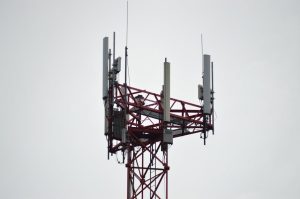Starlink: Revolutionizing Global Connectivity with Satellite Internet

Starlink: Revolutionizing Global Connectivity with Satellite Internet
Starlink is a satellite constellation developed by SpaceX, a private aerospace manufacturer and space transport services company founded by Elon Musk. The project aims to provide high-speed, low-latency internet connectivity worldwide, particularly in areas where traditional fiber-optic cables are not available or are too expensive to install. With Starlink, SpaceX seeks to bridge the digital divide and make the internet accessible to everyone, regardless of their geographical location.
The concept of satellite internet is not new, but previous attempts have been hindered by high latency, limited bandwidth, and expensive equipment. Starlink, however, uses advanced technology to overcome these challenges. The satellite constellation consists of thousands of small satellites in low Earth orbit (LEO), which are designed to provide faster and more reliable internet connectivity. Each satellite is equipped with a suite of advanced technologies, including Hall effect thrusters, Starlink-specific antennas, and a unique phased array antenna system.
How Starlink Works
Starlink uses a combination of satellite and ground-based technologies to provide internet connectivity. The system consists of three main components: the satellite constellation, the ground stations, and the user terminals. The satellite constellation is the backbone of the Starlink system, providing the necessary bandwidth and connectivity to support a large number of users. The ground stations, also known as gateways, are responsible for communicating with the satellites and routing internet traffic to and from the users. The user terminals, which are small dishes installed at the user’s location, communicate with the satellites and provide internet access to the user.
The Starlink system uses a technology called beamforming to focus the satellite’s signal on a specific area, increasing the signal strength and reducing interference. This allows for faster data transfer rates and lower latency. Additionally, the system uses advanced encryption and security protocols to protect user data and prevent unauthorized access.
Benefits of Starlink
Starlink offers several benefits over traditional internet connectivity methods. One of the primary advantages is its ability to provide internet access to remote and underserved areas, where traditional infrastructure is not available. This can help to bridge the digital divide and provide opportunities for economic growth and development in these areas. Starlink also offers faster and more reliable internet connectivity, with speeds of up to 1 Gbps and latency as low as 20 ms.
Another benefit of Starlink is its potential to provide backup internet connectivity during natural disasters or outages. The satellite constellation can provide a redundant connection, ensuring that critical communication services remain available even when traditional infrastructure is damaged or destroyed. This can be particularly important for emergency responders, healthcare providers, and other critical infrastructure operators.
Impact on the Telecommunications Industry
Starlink has the potential to disrupt the telecommunications industry in several ways. One of the primary impacts is the increased competition in the satellite internet market. Starlink’s low-cost and high-speed internet connectivity can attract customers away from traditional satellite internet providers, forcing them to adapt and innovate to remain competitive.
Starlink also has the potential to impact the traditional telecommunications industry, particularly in areas where fiber-optic cables are not available or are too expensive to install. The satellite constellation can provide a viable alternative to traditional internet connectivity methods, potentially reducing the need for fiber-optic cables and other traditional infrastructure. This can lead to cost savings and increased efficiency for telecommunications providers, as well as increased access to internet connectivity for consumers.




